 Movies and TV
Movies and TV  Movies and TV
Movies and TV  History
History 10 Things You Never Knew About Presidential First Ladies
 Movies and TV
Movies and TV 10 Zombie Movies That Will Actually Terrify You
 Humans
Humans 10 Times Scientists Were Absolutely Sure… and Absolutely Wrong
 Our World
Our World 10 Pivotal Moments for Life on Earth
 Movies and TV
Movies and TV 10 Most Realistic Medical TV Shows of All Time
 Creepy
Creepy 10 Eerie & Mysterious Ghosts of the Pacific Coast
 Weird Stuff
Weird Stuff 10 Typos That Accidentally Changed History
 History
History 10 Times Trickery Won Battles
 Technology
Technology 10 Awesome Upgrades to Common Household Items
 Movies and TV
Movies and TV 10 Movie Flops That Found Their Way to Cult Classic Status
 History
History 10 Things You Never Knew About Presidential First Ladies
 Movies and TV
Movies and TV 10 Zombie Movies That Will Actually Terrify You
Who's Behind Listverse?

Jamie Frater
Head Editor
Jamie founded Listverse due to an insatiable desire to share fascinating, obscure, and bizarre facts. He has been a guest speaker on numerous national radio and television stations and is a five time published author.
More About Us Humans
Humans 10 Times Scientists Were Absolutely Sure… and Absolutely Wrong
 Our World
Our World 10 Pivotal Moments for Life on Earth
 Movies and TV
Movies and TV 10 Most Realistic Medical TV Shows of All Time
 Creepy
Creepy 10 Eerie & Mysterious Ghosts of the Pacific Coast
 Weird Stuff
Weird Stuff 10 Typos That Accidentally Changed History
 History
History 10 Times Trickery Won Battles
 Technology
Technology 10 Awesome Upgrades to Common Household Items
Top 10 Really Good Things About 2020
Let’s face it: 2020 has been to years what “Cats” was to cinema: a costly, painful, interminably long disaster. And at least Cats featured the reassuring presence of Dame Judy Dench, albeit as a ridiculous, disturbing half-feline version of herself.
But before burying 2020 alongside Cats in history’s letterbox, there are some bright spots to acknowledge amidst a mostly dark year. Here are ten positives to salvage from a year that can’t end quickly enough.
Top 10 Funny Coronavirus Lockdown Activities Around The World
10 Pet Adoptions Have Increased Dramatically
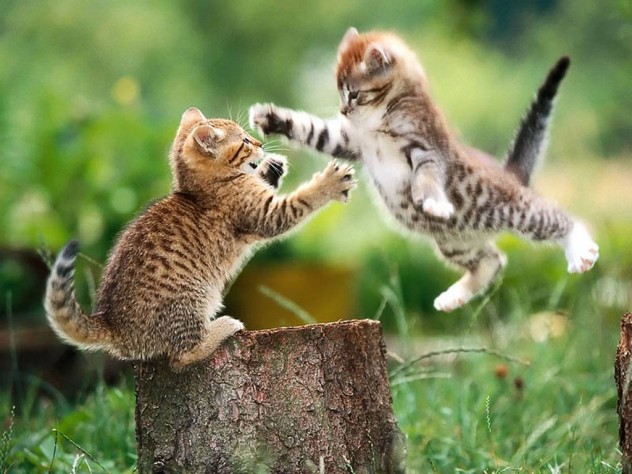
COVID-19 hasn’t affected all species the same. For prospective pets, more housebound homo sapiens means more homes for in-need animals, particularly dogs and cats. The result is good news whose benefactors will long outlive the pandemic; in Green Bay, Wisconsin, the aptly-named Happily Ever After Animal Sanctuary has seen a 30% increase[1] in adoptions since the inception of coronavirus-caused lockdowns.
Similar success stories have played out throughout Europe and the UK and, in Australia, many shelters have been completely emptied,[2] creating months-long adoption waiting lists. While certainly inconvenient for home-confined humans seeking a new four-legged family member, this is great news for cats and dogs finding good homes at unprecedented rates.
Dogs and cats are in such demand that even “imported” pets are being placed expediently. For example, The Sato Project,[3] which rescues strays from Puerto Rico’s notorious Dead Dog Beach, has upped the freight and frequency of its Freedom Flights to the US mainland, where dogs find their forever families. “Sato” is Spanish slang for “street dog” – and the shortage is great news for the hundreds of thousands of homeless dogs roaming the humid, tick-infested Caribbean island.
The pet industry also has surged, an economic bright spot during what for many sectors has been an incredibly tough year. Companies that supply pet products are seeing soaring sales for food, leashes, collars and – a nod to new puppy housebreaking – doggy diapers.[4]
9 Wild Animals are Faring as Well as Domesticated Ones
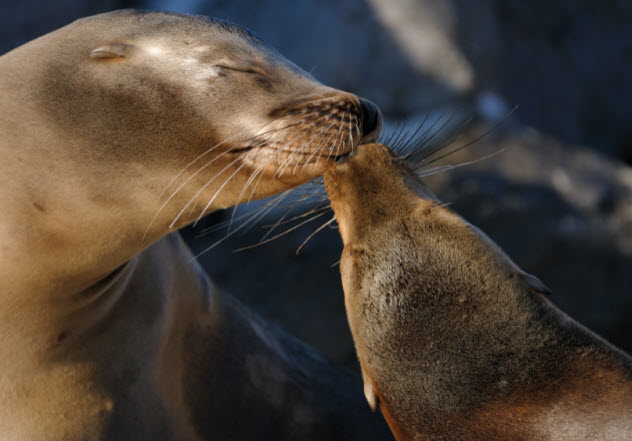
The next time 2020 gets you down, remember one thing: Wild humpback whales are gleefully singing off the coast of Alaska.
Each summer, coastal Alaska is visited by well over a million tourists, who whale watch and glacier gaze from countless cruise ships – which, for the record, were floating petri dishes[5] well before COVID-19. The annual inundation nearly triples the state’s population of about 750,000. Once the pandemic hit, that number effectively dropped to zero,[6] and scores of musically gifted humpbacks have written feel-good summer hits about their newfound peace.
“It’s the first time in human history that we’ve had the technological ability to listen to these whales in a meaningful way without us interfering,” said Dr Michelle Fournet, director of the Sound Science Research Collective.
Back on terra firma, many species are enjoying some long-limited elbow room. Just weeks into widespread lockdowns, sika deer began roaming outside their normal habitat in Nara, Japan, and wild turkeys started congregating in a park in Oakland, California. Jackals in Tel Aviv, goats in Istanbul, and even a land-lubbin’ sea lion[7] near Buenos Aires have all reveled in our retreat from the landscape.
8 Eloping is Making a Comeback
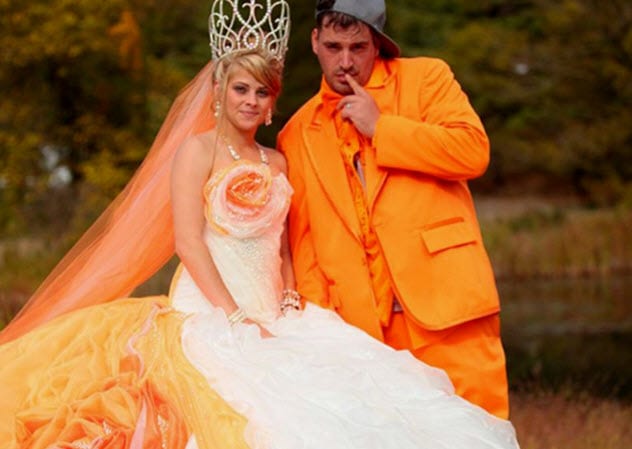
One of 2020’s crowning achievements has been the drastic, rapid decrease in conventional weddings. If there was one large gathering mainstay that seriously needed a disruptive force, it was weddings; it took the worst of circumstances to spare us all from the Best Man and Maid of Honor drunkenly bombing as you stare awkwardly from a table where you neither know anyone nor care to.
Many, if not most, people hate weddings,[8] viewing nuptial invitations as embroidered harbingers of obligatory check-writing and boredom. Hell, even the bride and groom hate what the wedding does to them leading up to the big day, as a sacred event that should be about love is soured into an expensive, obsessive, neurotic chore.[9]
2020 has given us the best excuse ever to (1) not plan large weddings and (2) not attend them. Just check the box on the RSVP marked “Sorry, I do not wish to die alone on a ventilator during your honeymoon.” Safety first has put long-overdone mass matrimonial gatherings last – a refreshing reprioritizing.
A recent Wall Street Journal[10] article discusses another COVID-related issue that trends toward eloping: what for many self-important engaged couples is some much-needed perspective. A couple featured in the piece canceled their 150-person ceremony to instead marry with no one other than their dog in attendance; before friends and family via FaceTime, they even served as their own officiants. “Amid a global pandemic,” said the bride, “a lavish wedding really just didn’t feel important anymore.” Best. Wedding speech. Ever.
7 . . . And Divorces Are Rising, Too
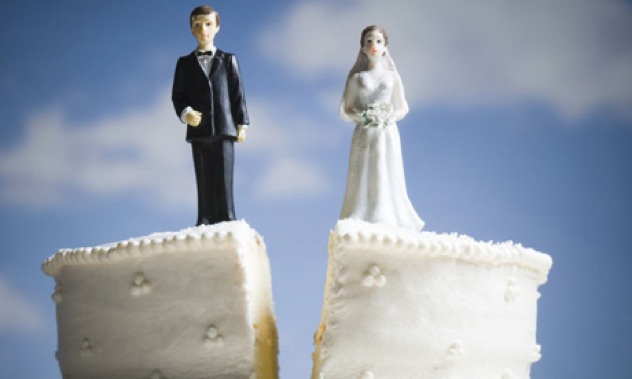
From March through June 2020, the number of people seeking divorces was 34 percent higher[11] compared to 2019. At first glance this is bad news, since ending a marriage is nobody’s idea of fun.
As with nearly everything in 2020, a driving force is COVID-19. With couples cooped up for extended periods of time, some are realizing that the person they married isn’t worth waiting for death to part ways with. Experts contend the combination of stress, unemployment, financial strain, illness and homeschooling children have placed significant strain on relationships
However, COVID isn’t really the cause of divorce but rather a catalyst. Putting two people who don’t really belong together in close quarters forces them to show each other their true colors. Without offices, friends and other buffers, mismatched marriages are revealed for what they are: pairings of two people better off alone.
Hardships bring two people truly meant to be together closer, not further apart. Most of the couples calling it COVID quits are only accelerating separation rather than having it foist upon them – and in that context, it’s better for people to recognize their failed marriage now than a decade from now, or perhaps never.
But what about the children? A prominent legal templates company[12] found that, since the pandemic’s inception, 45% of divorcing couples had children under the age of 18. But per Wendy Paris, author of “Splitopia,” staying together “for the kids”[13] can be worse than divorcing despite them.
6 Mother Nature is Getting a Much-needed Respite

Mother Nature had been dropping hints lately that something wasn’t quite right with our relationship. She tried increasing the frequency and severity of hurricanes[14] in the Western Hemisphere and, in the Far East, choking off Beijing’s residents for days at a time with putrid air conditions. Then she thought burning a significant portion of California to the ground might work. Yet, we persisted.
Finally, a winning strategy for Mother Nature: if mankind can’t be trusted to roam the Earth responsibly, maybe humans should just go to their rooms. Our air travel, traffic jams and industrial waste have been confiscated and placed in Mrs. Nature’s desk; if we’re good, maybe we can have them back at the end of the school year.
With humans tucked away, Mother Nature has shown an incredible ability to bounce back[15] from all the shit we pull under business-as-usual conditions. With social, economic, industrial and urbanization activity significantly diminished, the planet has maximized its long overdue time off with prodigious improvements to air quality, cleaner rivers and less noise pollution.
The uptick in air quality is arguably the biggest boon: the World Health Organization – trusted by every civilized nation save the United States – estimates that about three million people die each year[16] from air pollution-related ailments, with 80% of urban area residents regularly exposed to unsafe breathing conditions. Both Mother Nature and its inhabitants literally needed a breather, and 2020 has provided that.
Top 10 Uplifting Virtual Performances To Brighten Your Quarantine
5 Real Estate Prices are Soaring

… and unlike the mid-2000s housing bubble[17] – which took the global economy with it when it burst – this time the spike in home prices is built on the sound economic science of supply and demand rather than suckers being hoodwinked with loans they can’t repay.
The recent, stabler uptick in home prices is a result of (what else?) COVID-19. Well-to-do residents in affluent yet at-risk cities are fleeing to the suburbs amidst a protracted pandemic where elbow room has become a lifesaver rather than a mere luxury. The result is a boom in satellite neighborhoods like New Jersey and California’s greater Bay Area. In East Orange, NJ – a town bordering Newark with a 20% poverty rate and violent crime 35% above the national average – a home listed at $285,000 had 24 offers[18] and sold for well north of $300,000.
Denver, Chicago, Houston – all seeing significant bumps in mortgage applications[19] for suburban homes, leaving many longstanding, struggling middle-class families literally sitting in equity they didn’t have prior to 2020. The trend is just as prevalent in major metro areas outside the US, including London, Paris[20] and Tokyo.
For once, a housing bubble has a Robin Hood-esque wrinkle to it: the less affluent are profiting from largely wealthy buyers happy to pay a premium to escape crowded, potentially contagious cities. And one of the good news items that’s making it possible is this list’s next entry.
4 We’ve Proven Working From Home Works

Any office worker with a hellish commute – which, leading into 2020, described an ever-increasing number of us[21] – has begrudgingly grumbled to themselves some version of “couldn’t I do this sh*t from home?” For many, a commute’s as-the-crow-flies length was absurdly irrelevant to the hassle and time needed to traverse it. In northern New Jersey, for example, despite clusters of towns within 15 miles of New York City, the commute to Manhattan’s business districts often takes well over an hour; each month, that means an extra workweek’s worth of time – some 40 hours – trekking to and from the office.
Why couldn’t we work from home? Mostly because managers didn’t trust employees not to slack off. But with the advent of COVID-19, working from home went from a seldom-permitted luxury to an all-permeating safety necessity. Seemingly overnight, the vast majority of those capable of making a living from our laptops were doing just that.
Despite fears that conventional commuters would go from working hard to hardly working, this grand workforce experiment has been largely successful. In fact, businesses have seen unexpected benefits[22] of work-from-home arrangements, including higher meeting participation and improved managerial attentiveness.
Even before COVID, research showed that remote workers are often more productive than their commuting counterparts. Among other reasons, the time work-from-home employees are spared from cars, buses and subways is parlayed into more labor: one study reported that the extra time at-home employees put in amounts to, on average, an extra 1.4 workdays per month.[23]
3 We’re Reading More Books
It took long-term, wide-scale lockdowns to get us there, but 2020 has seen a healthy surge in book reading. For those unfamiliar, books are like the Internet but printed out, placed on paper and bound together. Pages are typically numbered for your convenience – no scrolling or clicking required.
A survey of 1,000 Brits found that time spent reading books has nearly doubled,[24] with 41% reporting reading more and only 10% less. On average, their weekly reading expanded from 3½ hours per week to about six.
More than half of respondents reported reading more because they had more spare time, with 35% citing books as providing “an escape from the crisis.” Aligning with this sentiment is a shift in genre preference, with crime novels and thrillers outpacing dystopian fiction and pandemic-centric nonfiction.
Even early in lockdowns, it was clear book sales were surging. MarketWatch reported upticks in everything from outdoor survival skills tomes to literary classics like “The Great Gatsby”.[25] Kids are getting in on the act as well. In addition to an expected increase in academic workbooks and at-home teaching aids, juvenile fiction saw an incredible 65% spike from late February through mid-April, roughly the first six weeks of lockdown.
2 2020 Has Prioritized Facts Over Feelings
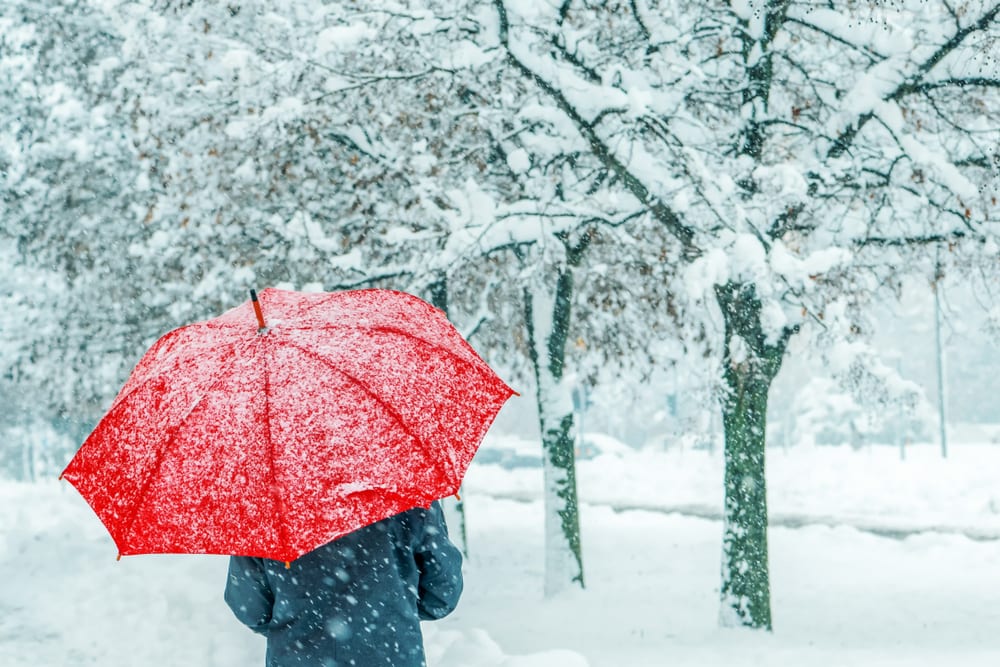
Many a snowflake has melted in 2020. And it was about time.
In a world run amok with safe spaces and participation trophies, 2020 has offered neither, with a generous serving of mankind’s marquee motivator – self-preservation – on the side. “These unprecedented times” have forced us to stop placating people’s feelings to spite our own well-being.
On an everyday basis (at least an everyday 2020 basis), that thought process goes something like this: “I’ve spent months holed up in my home, carefully protecting my own health and that of my loved ones. I’m not letting this moron ruin five months of prudence with five seconds of irresponsibility.”
In less than a year, COVID-19 has killed more than one million people.[26] It is absolutely mind-boggling that some people still won’t wear masks or maintain social distance. It’s as if these people have been living on Mars since… oh, about December 2019 or so, and reentered Earth’s atmosphere shortly before coughing in someone’s face.
What this has done is force an overly coddled Western Civilization to cut the polite PC horseshit. Before 2020, people had become waaaaaaay too comfortable foisting their uber-niche needs onto mainstream society. 2020 has replaced pusillanimous trigger warnings on everything from historical monuments[27] to literary classics[28] with real-life issues actually worthy of triggering us – walking, wheezing disease vectors who believe, against all evidence, that the next pair of lungs hooked up to a hospital ventilator couldn’t possibly be theirs.
1 Medical Science Is Meeting the Moment

The fastest a vaccine has been developed for a major disease is four years, when an inoculation against mumps[29] became available. Though 2020 seems… like… it’s taking… FOREVER, the world is witnessing what will rank among the greatest feats in medical history: a vaccine for a lethal, globally pervasive disease in under half that time.
Granted, a vaccine certainly isn’t weeks away, nor are we “rounding the corner”[30] (unless there’s a cemetery around the block); on October 23, the US recorded 85,000 new COVID cases – its highest single-day total yet. But epidemiology is a painstaking process that takes not only drug development but controlled patient studies, manufacturing expedience and logistical nimbleness.
Considering this, it’s amazing how close we are. Several pharmaceutical companies are in Phase Three – the final phase comprising large-scale, placebo-comparative testing – of their clinical studies, and are actually manufacturing the drugs should they gain approval. The prospective vaccine from Johnson & Johnson,[31] which is resuming Phase Three after an adverse side effect couldn’t be linked to the drug, shows particular promise, as it can be administered in a single dose and, logistically, doesn’t need to be ultra-cold throughout the supply chain.
Meanwhile, the industry is ready to hit the ground running once major government health organizations approve a vaccine. Pharma companies worldwide have reconfigured equipment and invested in infrastructure to produce, inspect and ship the billions of necessary doses to get planet Earth back to some semblance of normal. For as much harm as they’ve caused – we’re looking at you, opioid crisis instigator Purdue Pharma[32] – 2020 has seen big pharma act competently, responsibly and even altruistically.
Top 10 Images That Show The Positive Side Of The Coronavirus Pandemic








